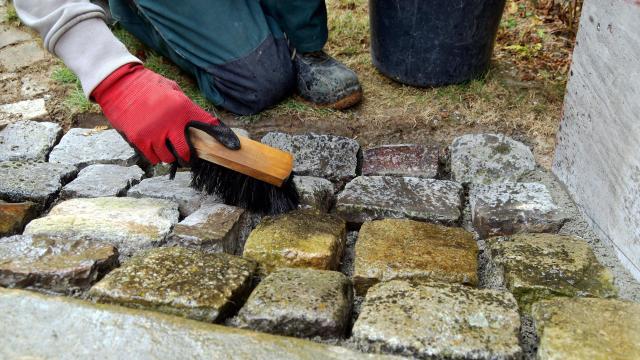While there seem to be cleaning products formulated for any type of stain, mess, or grime you can think of, some people — for a variety of reasons — prefer to take more of a chemistry-class-approach to household cleaning, working directly with the acids and bases used to make those products.
Regular Lifehacker readers may be familiar with our coverage of cleaning with household substances, including vinegar, lemons and lemon juice, borax, baking soda, and hydrogen peroxide. And perhaps you’ve added citric acid to your cleaning routine and have been impressed with the mighty power of this low-level acid, and are now looking to take the next step and move onto something harder. Something like muriatic acid.
But before you buy a gallon of it online or at your local hardware store, there are a few important things to know about how and when to use this highly toxic chemical, and how to do so safely. Here’s what to know.
What is muriatic acid?
Muriatic acid is a slightly weaker form of hydrochloric acid that’s still caustic enough to burn your skin and clothing, and corrode some types of metals and plastics. For these reasons — along with the fact that inhaling muriatic acid can irritate the lining of lungs and nasal passages — it is typically used as a last resort, when no other substance gets the job one.
How to use muriatic acid safely
Before getting into the different uses for muriatic acid, we’re going to talk about how to work with the strong chemical without doing major (or minor) damage to yourself, or anything or anyone else. Like any cleaning or household product, read the manufacturer’s instructions carefully, and follow any safety guidelines provided.
We should warn you: There are a lot of safety rules and precautions to take before using muriatic acid, which is why it’s especially important to read the label. Here are a few examples:
- Only use muriatic acid in extremely well-ventilated areas.
- Wear protective gear, including acid-resistant eye goggles, a dual-cartridge respirator, face shield, acid-resistant rubber gloves, rubber boots, long pants, and long-sleeved shirt.
- Always dilute muriatic acid with water, per the manufacturer’s instructions. To do so, pour the water into a plastic (never metal) bucket, and gradually add the acid (the acid never goes in first).
- Only ever dilute muriatic acid with water (never any other substances).
- Always keep baking soda, garden lime, and a source of water handy while working with muriatic acid so you can quickly neutralise it, if necessary.
Uses for muriatic acid
Having said all that, there are times when muriatic acid is the best option for a particular job, and is worth using, provided that the person using it knows how to do so safely. These tasks include:
-
Prepping brick, concrete, or stone to be painted.
-
Getting rid of mould and mildew on basement walls (while visibly improving their appearance).
-
Cleaning and adjusting pH levels in swimming pools.
When you’re done with the muriatic acid, call your local recycling centre or fire department to ask how to best dispose of it (it doesn’t go in your household trash, and shouldn’t be dumped anywhere).

Leave a Reply
You must be logged in to post a comment.